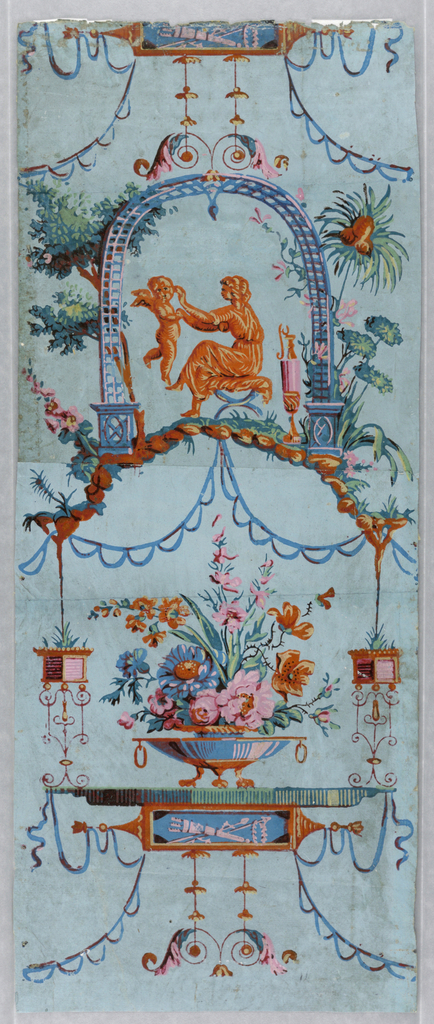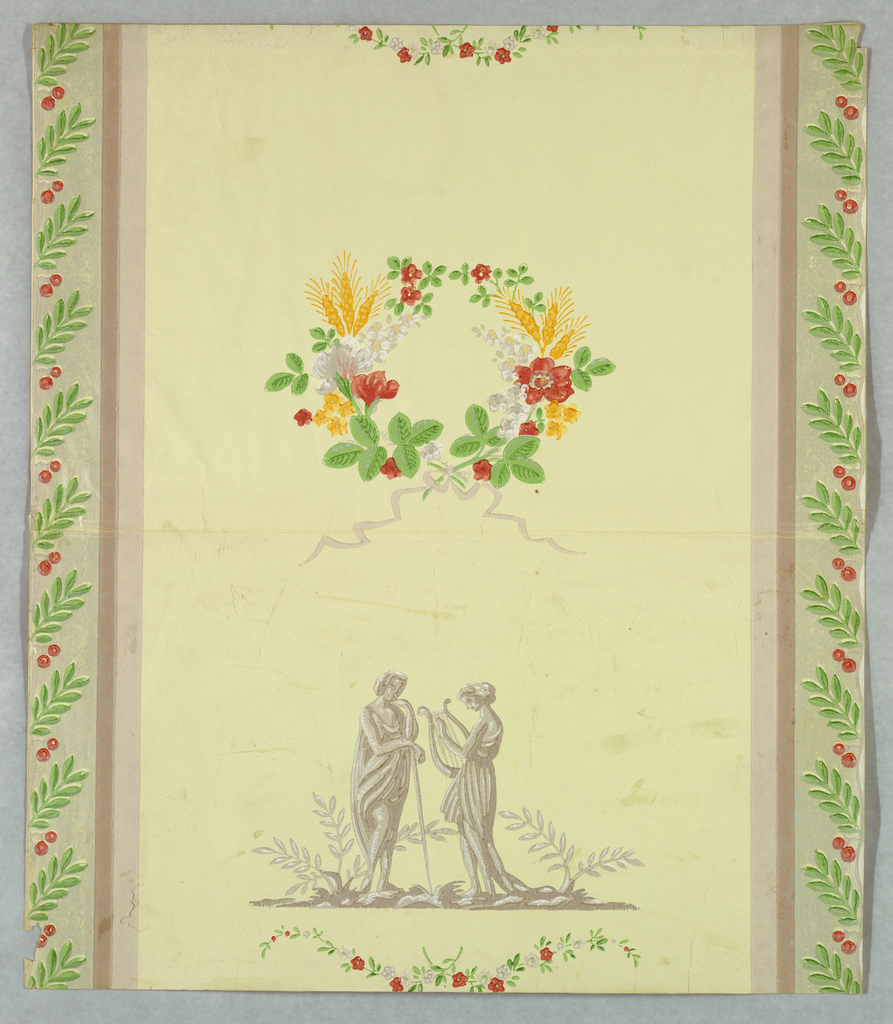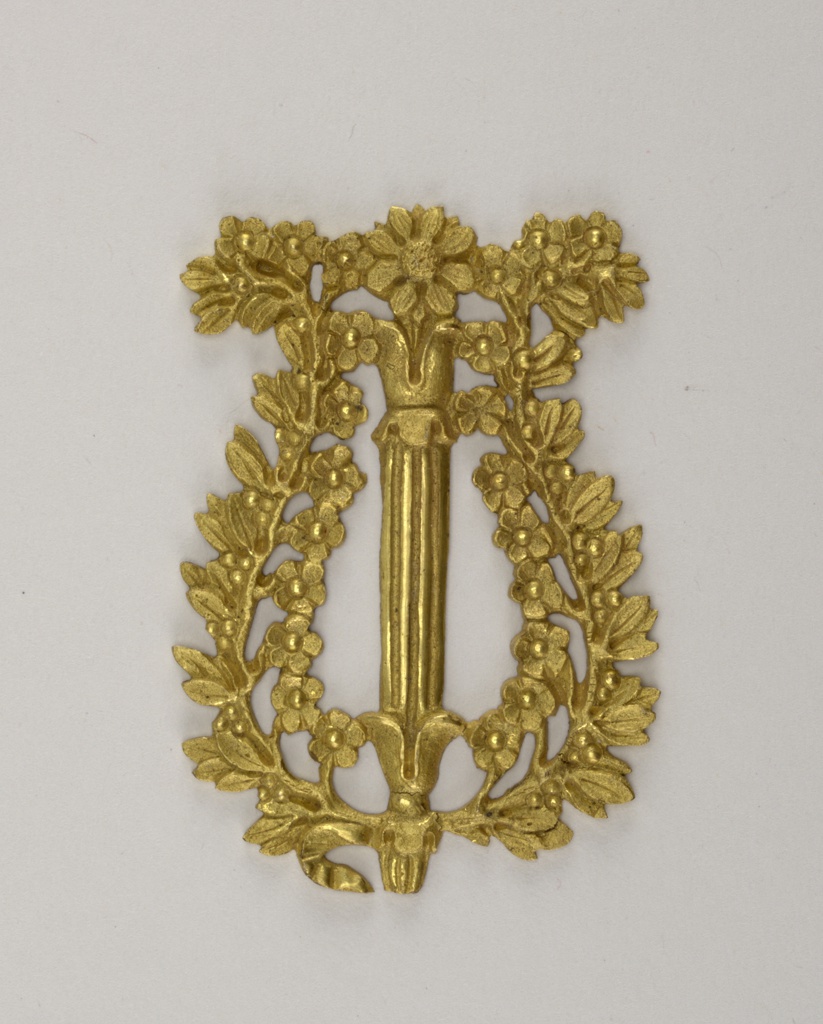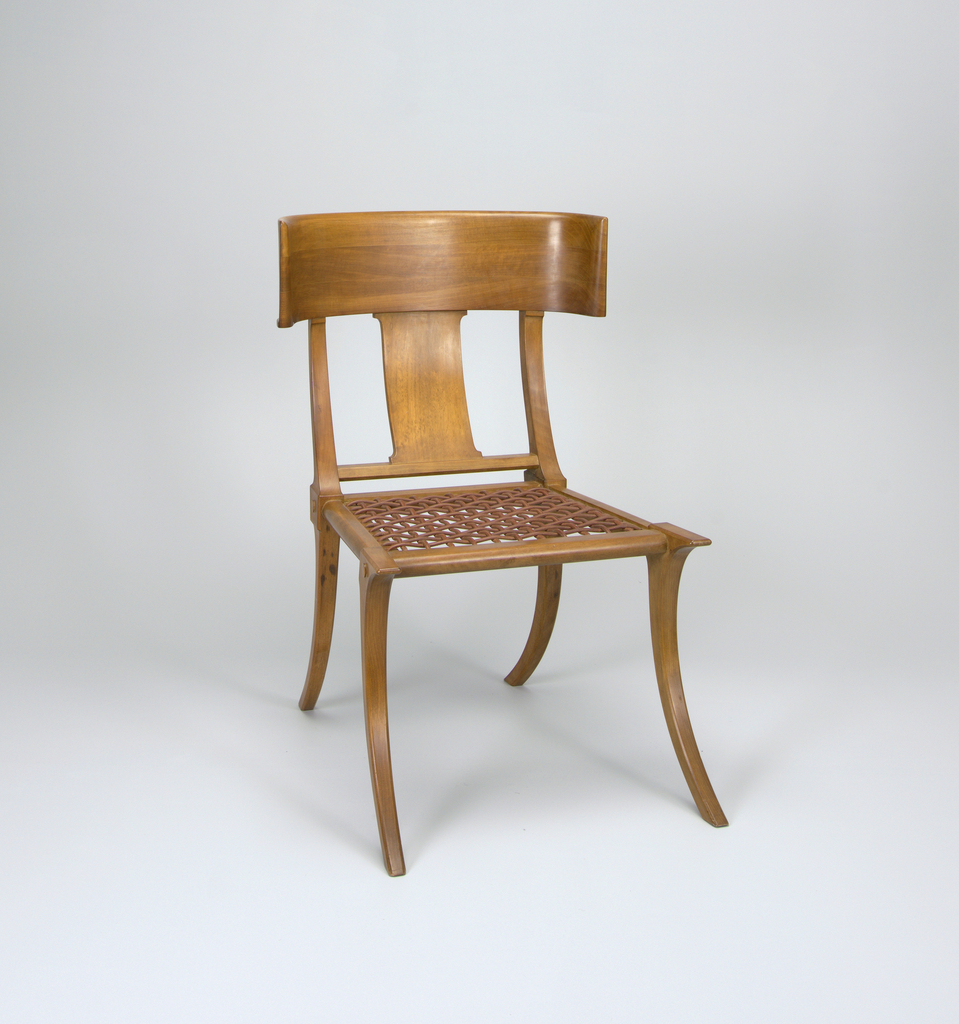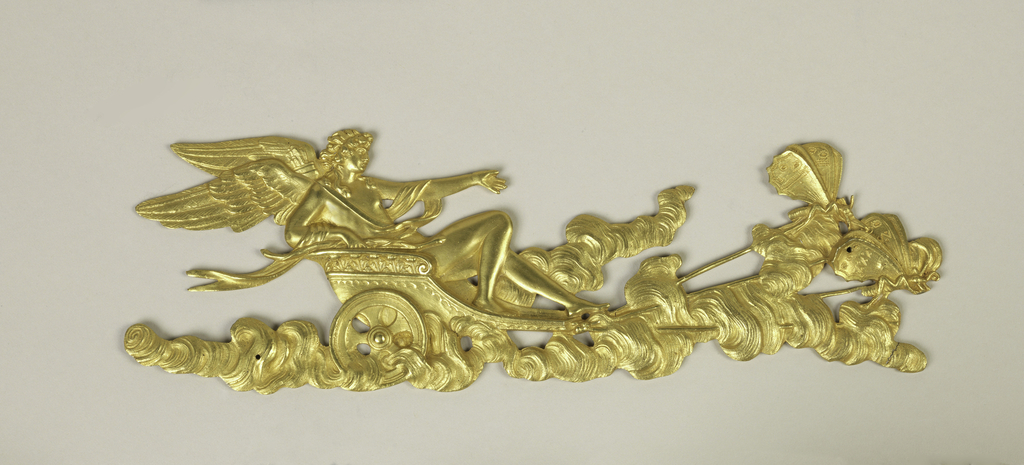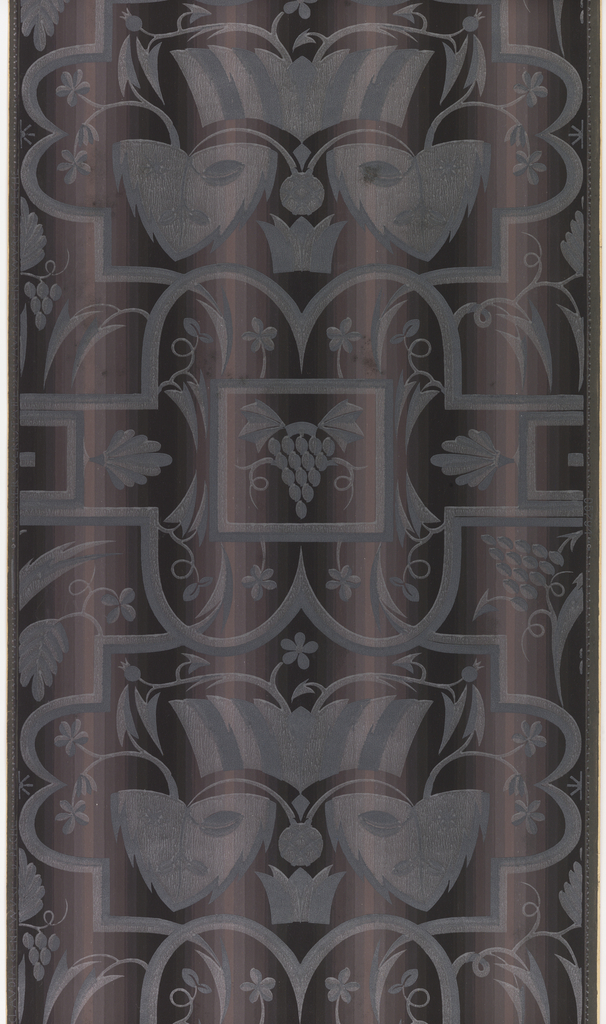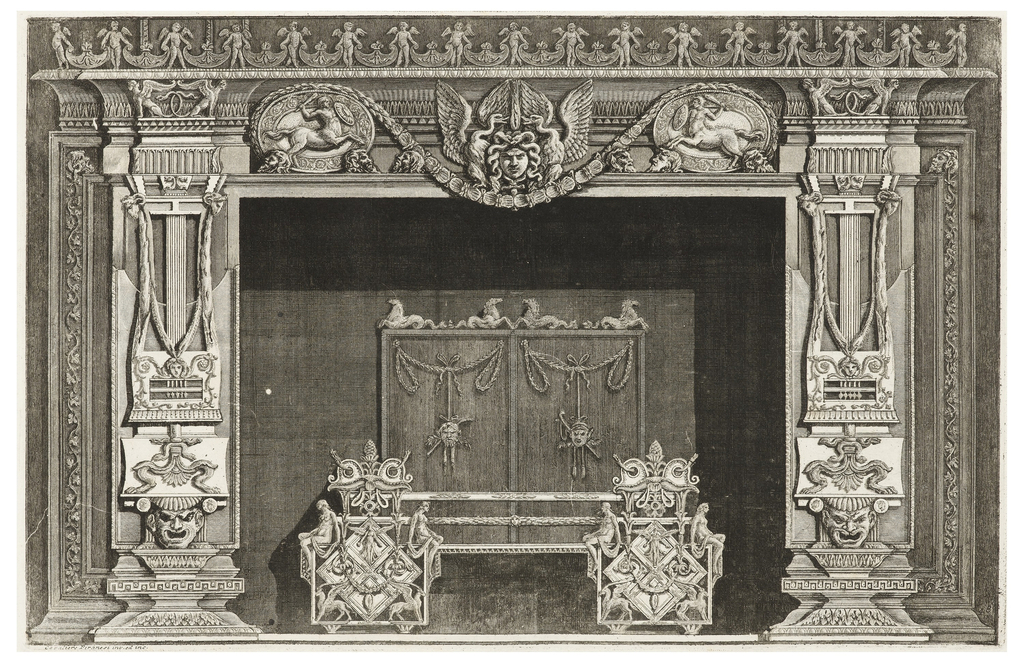This is an arabesque wallpaper design from the late eighteenth century, containing two alternating views. The top view shows a woman, possibly Venus, within an arbor seated on a cross frame stool, playfully bouncing a putto, perhaps Cupid, on her foot. A tall urn sits behind her. A tree grows off to the left, towering...
This is a Colonial Revival wallpaper acquired during the tenure of the museum founders, Eleanor and Sarah Hewitt. This is a 20th century machine-printed reproduction of an early 19th century design. Given the contemporary date of this piece, and the crease across the middle of the paper, when received by the museum this sample was pasted into...
Gilt bronze furniture mounts have long been an element of decoration in French interiors. In addition to their use as ornament, they were highly functional. Their gilded surfaces added value and appeal to what would typically be a basic utilitarian purpose: protection for furniture. The mounts were generally fixed to the edges, corners, and feet...
The concept of “eternal” style is a bit of an oxymoron, after all, many of today’s producers and designers roll out new and improved models on a regular basis. Thinking about cars, phones, and electronics it is easy to fall prey to the idea that everything is expendable and that each new item is better...
This is a gilt bronze furniture mount made in France, in about 1800. Highly decorative mounts like this one were important elements in interior and furniture design from the late seventeenth to the early nineteenth centuries. They were created by master artisans trained in a strict guild system which applied exacting standards to the fabrication...
I love the contrast in this paper by Jacquemart et Bénard between the monochrome neoclassical ornament and the vibrantly-colored animals. This sidewall hovers on the border between the austere Empire style of the first decades of the 19th century and the mid-century taste for highly-detailed, brightly-colored designs. The overall layout of this paper, with its...
Dagobert Peche was one of the most influential designers working in Europe in the 1910s and 20s. In 1910, after meeting influential Austrian designer Josef Hoffmann, Peche began contributing numerous designs for textiles and wallpapers to the Wiener Werkstätte, the design workshop founded by Hoffmann and Koloman Moser in 1903. Impressed by his work, Hoffmann...
French style during the early 19th century is characterized by a strong emphasis on Greek and Roman imagery from antiquity. In many ways, it is a continuation of the Neoclassicism of the late 18th century. After the French Revolution of 1789, the new government encouraged the use of Neoclassical imagery in order to create a...
This print comes from Giovanni Battista Piranesi’s Diverse maniere d’adornare I cammini ed ogni altra parte degli edifizi, published in 1769. Piranesi created designs inspired by ancient Roman aesthetic principles, which adopted elements of Egyptian, Grecian, and Etruscan motifs until fully absorbing them as their own. In this work particularly, Piranesi included motifs straight from...
